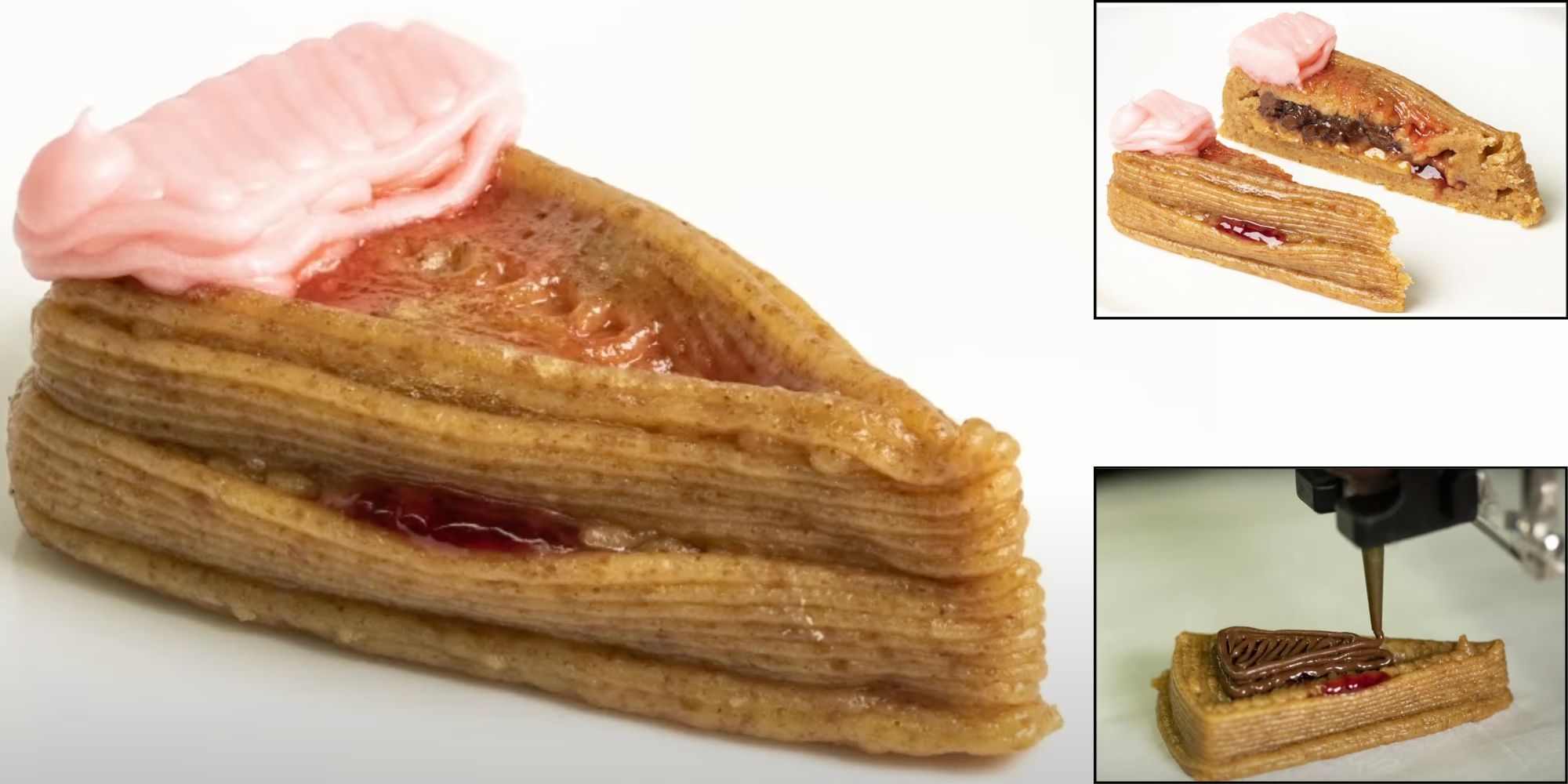For better or worse, scientists have figured out how to 3D-print real, edible food items, and if the most recent development — a seven-ingredient cheesecake — is anything to go by, the future looks decidedly unappetizing. Advancements in 3D-printing over the last decade have opened the door to all kinds of applications, from hobbyist trinket-making to manufacturing and building construction. A rocket made primarily of 3D-printed parts even successfully launched in March 2023 and managed a brief flight (but fell short of reaching orbit). Working with food poses unique challenges, though, and proponents of 3D food printing have long been trying to get it right.
The latest example, and perhaps the most complex yet, comes from a team of engineers at Columbia University, who have shared a look into the process of printing slices of cheesecake using “edible food inks,” otherwise known as ingredients. That includes graham cracker, peanut butter, and Nutella, along with frosting and various fruit-based fillings. A 3D printer doesn’t just spit out a fully formed, beautifully executed dish like some sort of Star Trek replicator, though; it builds layer by gooey layer, which is apparent in how the resulting cheesecakes look. Way down the line, the researchers say, 3D printing could make for better, more nutritious and customizable processed foods. Sounds, gulp, delicious.
Taking 3D-Printed Food To A New Level
The Columbia team’s cheesecakes mark a big jump from earlier attempts at 3D food printing, which, the engineers point out, have typically focused on fewer, uncooked ingredients. That added complexity, however, doesn’t come without additional challenges, and it took several rounds of trial-and-error to achieve cake slices that could stay structurally intact. The key? A graham cracker base. They also used heavier ingredients like peanut butter and Nutella to form little pools that could contain the less firm jams and banana puree so they wouldn’t just spill out the sides.
The obvious question is, Why? For one, the researchers say, 3D food printing could allow for safer food preparation by reducing the amount of human handling that goes into the process. When considering the potential for something like a countertop appliance that comes with ingredient capsules, the technology could also allow for more personalized quick-meals that pack more nutrition and cater to specific dietary needs. This could be useful both in a family household and in places like nursing homes, they say.
“We have an enormous problem with the low-nutrient value of processed foods,” said Professor Christen Cooper from Pace University Nutrition and Dietetics, who contributed to the research. “3D food printing will still turn out processed foods, but perhaps the silver lining will be, for some people, better control and tailoring of nutrition — personalized nutrition.” At least for now, that 3D-printed future is probably still a ways off.
Source: Columbia University


